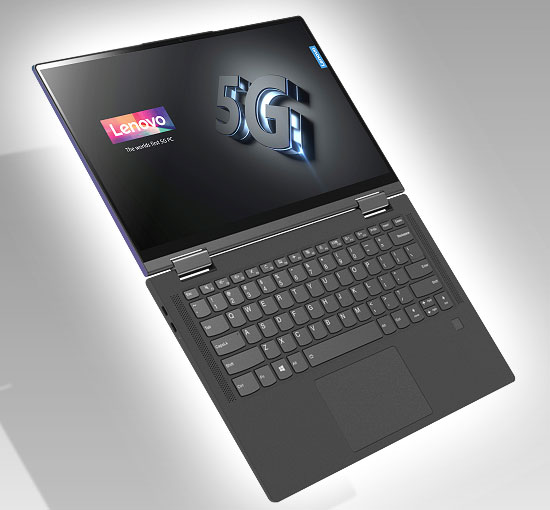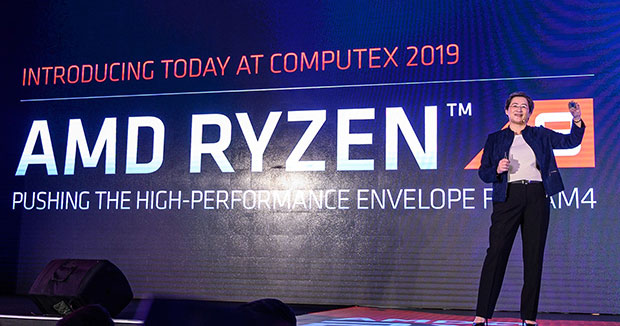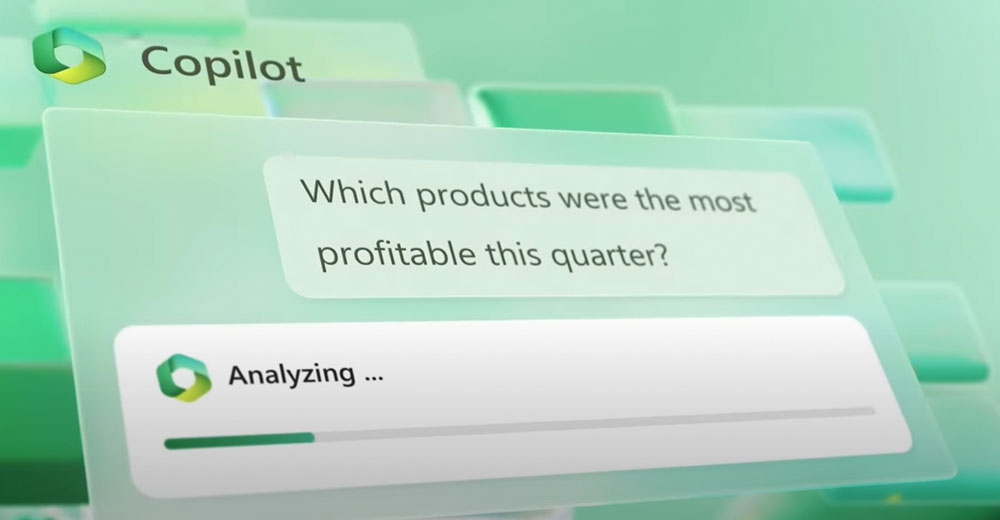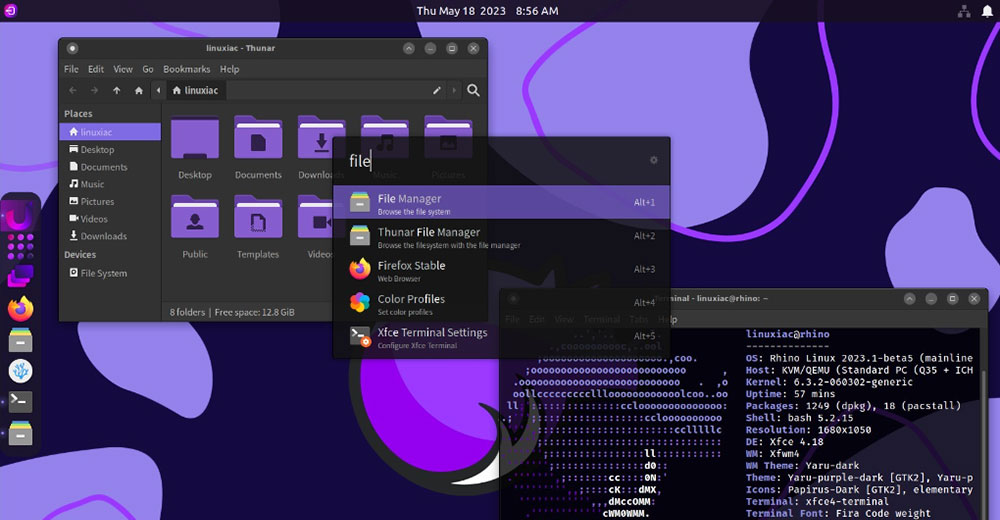Like a lot of folks, I’m a tad sick of Intel. Last month we learned of its second big security scandal in as many years. Once again, the company not only neglected to disclose the problems in a timely way but also lacked a plan to recall the failed parts.
Once again, buyers likely will have to cripple their Intel processors if they want to use them safely. Intel for some time has seemed disinterested in PCs and servers and instead seems more focused on things like its lagging autonomous car effort and drone swarms.
Its last CEO resigned in disgrace and its current CEO took the job only because no other qualified candidate wanted it. Oh, and let’s not forget the whole Qualcomm mess — Intel got caught stealing Qualcomm’s technology and had to exit the smartphone market.
In the midst of all that drama AMD has kept its head down and executed, thanks to its IBM-trained CEO Lisa Su. At last week’s Computex, AMD stepped out from under Intel’s cloud and showcased winning platforms for both PCs and servers, with praise from some of its OEM partners that was unprecedented.
I’ll share some thoughts on this David and Goliath story and then close with my product of the week: a new laptop that I think represents the future of cloud-connected 5G devices from Lenovo: the Project Limitless Laptop.
Taking On a Much Larger Competitor
For virtually all its existence AMD has been defined by its larger competitor. This has been a painful experience for AMD, because pretty much every time it made inroads, Intel either cheated (and got caught) or AMD stumbled. It incurred substantial damage last decade when it effectively had Intel on the ropes but then failed to execute.
When I think of AMD, I think of The Ballad Of The Noob – World of Warcraft legend about a Level 1 player taking out a Level 60 player just by staying focused. It is an updated tortoise-and-hare story.
The thing is, a smaller company like AMD can’t possibly take out a larger firm like Intel any more than a noob can take out a Level 60 player in PVP unless the more powerful entity takes its eye off the game. Yet that is what Intel seems to do every decade or so. The firm gets comfortable, looks at some other sparkly thing, and then forgets about the business that is keeping the lights on and suddenly wakes up bleeding market share.
By my count this will be the third time AMD has had the opportunity to make a run at Intel and it may be that this third time really is a charm.
Acer Points to AMD’s Advantage
One of the interesting parts in Lisa Su’s CES keynote was when she brought up the co-COO from Acer and he pointed out AMD’s huge advantage against Intel. This was after he thanked Lisa for making a friend of his a great deal of money on AMD stock, by the way. (AMD has been a Wall Street darling for some time).
The big comment was that when you use an AMD CPU and an AMD GPU in the same product, you get an incredibly powerful and affordable result. I like to think of this as AMD squared. He implied Acer would be using this all-AMD configuration for breakout products that it plans to position to take market share from its competitors. Acer is also a huge supporter of the AMD FreeSync monitor platform, arguably making it the most strategic of the OEMs backing AMD.
Microsoft’s Contribution
Another fascinating on-stage event was the arrival of Microsoft’s Roanne Sones, CVP leading OS platforms, who joined Lisa Su on stage. Microsoft and Intel have had long-term disagreements over pretty much everything since a past Intel CEO refused to be on stage at a Microsoft launch if the AMD CEO was going to be there.
The two firms weren’t getting along all that well before, but that event pushed Microsoft’s then-CEO Steve Ballmer over the edge, and things got pretty hostile. Even though both CEOs are long gone, there is a subtle undercurrent that neither company is particularly fond of the other.
Despite that, Microsoft has been like Switzerland at events, seeming to love both venders. Not so much this time. Sones presented as a real fan of AMD and implied that the best PCs coming to market had both AMD CPUs and GPUs, reinforcing the “better together” concept that the Acer COO had supported.
What AMD Announced
AMD announced massive improvements to its Ryzen and Radeon lines, both well priced and both significantly more powerful than the products they replaced. The benchmarks against Intel were very powerful, indicating that at the top end of the line, with AMD, you could get a processor with equal or better performance that was far more power-efficient for half the price. That’s a cost savings of around US$500 on every related PC on the processor alone.
That is the same kind of thing that caused me to buy the Mercedes GLA 45 AMG over the Porsche Macan S — equal or better performance for more than $10K less. That was an impressive value, about a 12.5 percent savings. By comparison, the AMD advantage would be more like a 25 percent savings on a typical system price. That’s truly huge.
Wrapping Up: Same Performance, Better Price, No Drama
For me, between the two firms, it comes down to trust. AMD is focused on its target markets, and under Lisa Su it says what it will do, and does what it says. AMD has no insider trading issues, no security problem coverups, no IP theft history, and no waning support for PCs or servers as it chases the latest sparkly thing.
AMD’s Computex message was pretty simple: You’ll get more for less money and AMD will have your back. That’s a powerful alternative to Intel. While entrenched vendors like Intel are a bitch to displace, AMD appears to be doing it the old-fashioned way — with hard work and perseverance. In a world increasingly defined by fake news, this approach is a strong and important counterpoint.
Project Limitless is as much an initiative as it is a product, but this is really the first major effort to rethink the notebook computer in light of 5G.
You see with 5G you have a massive increase in data throughput, particularly at the edge of the network, and a massive decrease in latency. This means that when you have a 5G connection, you can pretty much live off the cloud.
Microsoft has positioned Windows Virtual PC against this opportunity, which promises a system that will retain state, always be backed up and updated, and never again require the user to become a systems administrator. Basically, you’ll turn computing on and off like you turn the lights on and off.
What makes this notebook (and potential line) very different is that it is designed to live off the cloud. This means it favors high-speed connectivity and battery life over pure processor performance, but it doesn’t compromise on the visual experience.

It is designed to stream 4K and 8K content, to run AR/VR/MR/XR headsets, do amazing video chats, and have screen refresh rates that rival gaming machines.
Sadly, the system is not due until early 2020, so you can’t rush out and buy it today, but it likely sets the initial bar for the majority of systems we’ll see as 5G rolls out next decade, and we move away from desktop computing to cloud computing.
The systems will have days of battery life, carry weights that likely will make the MacBook Air seem heavy, and wireless performance that will make your wired network seem slow.
I can hardly wait until 2020 and the beginning of the end for my part-time system administrator duties. As a result, Project Limitless from Qualcomm and Lenovo is my product of the week (and likely on the fast track to my 2020 product of the year).
























































